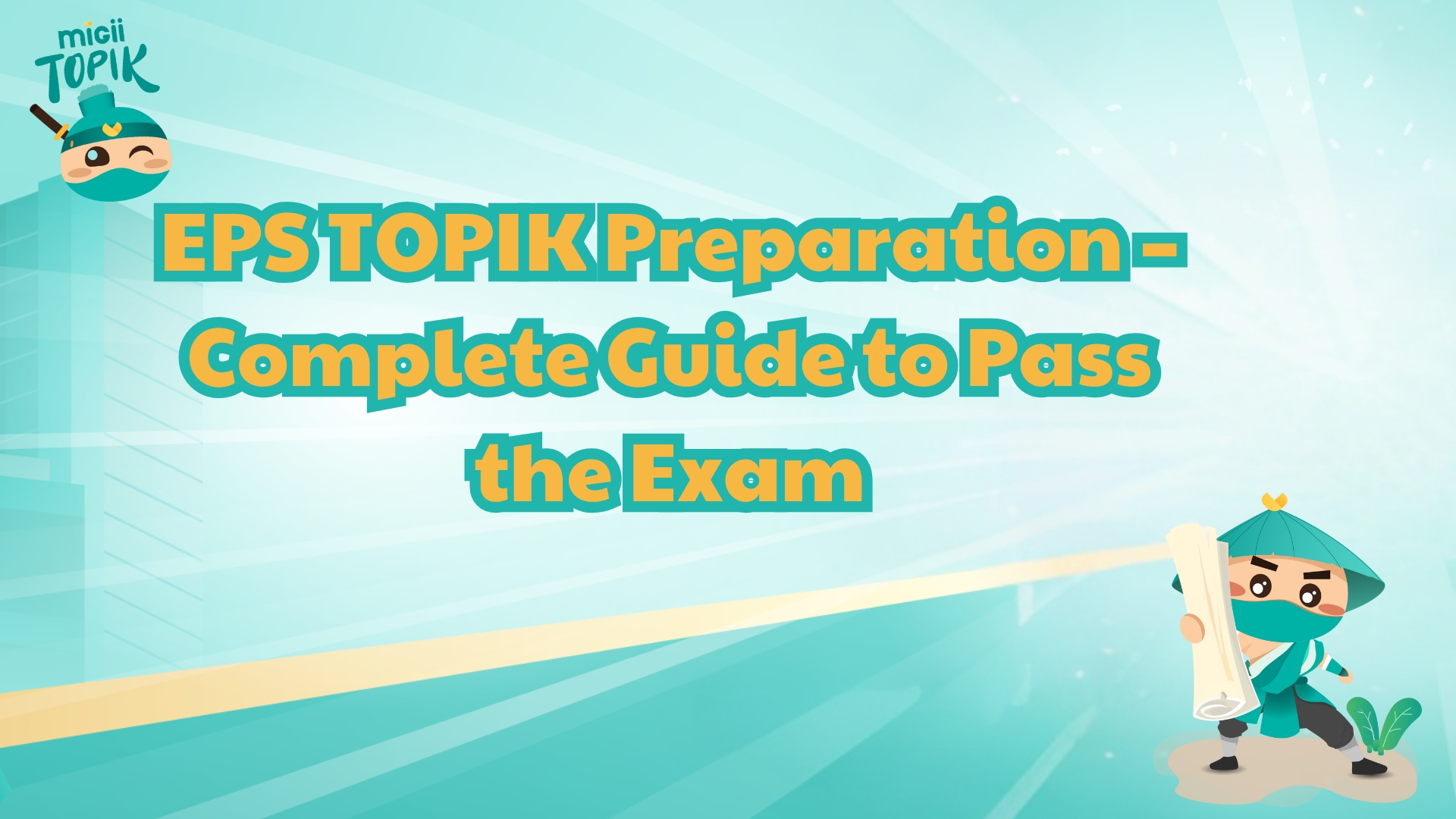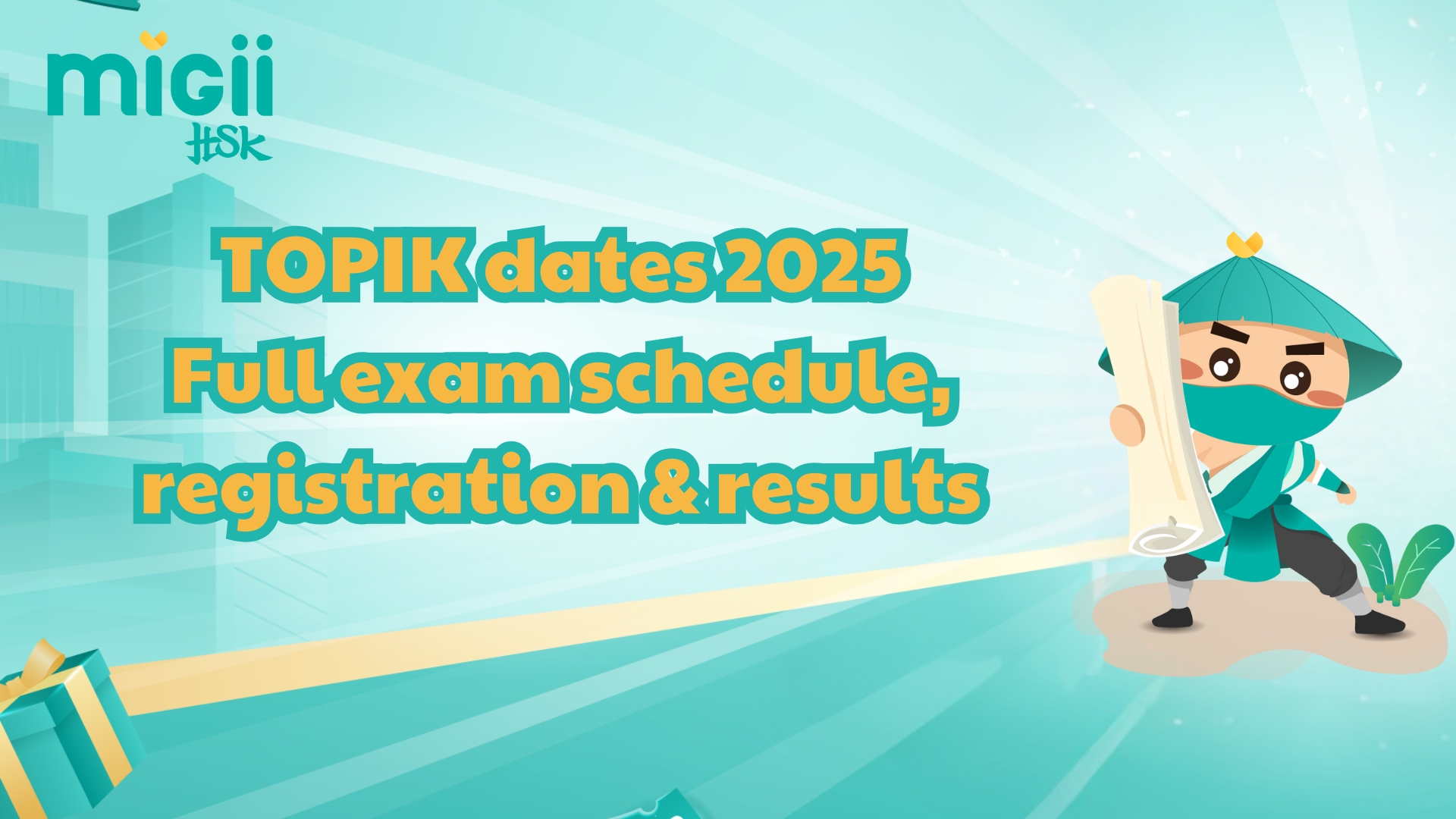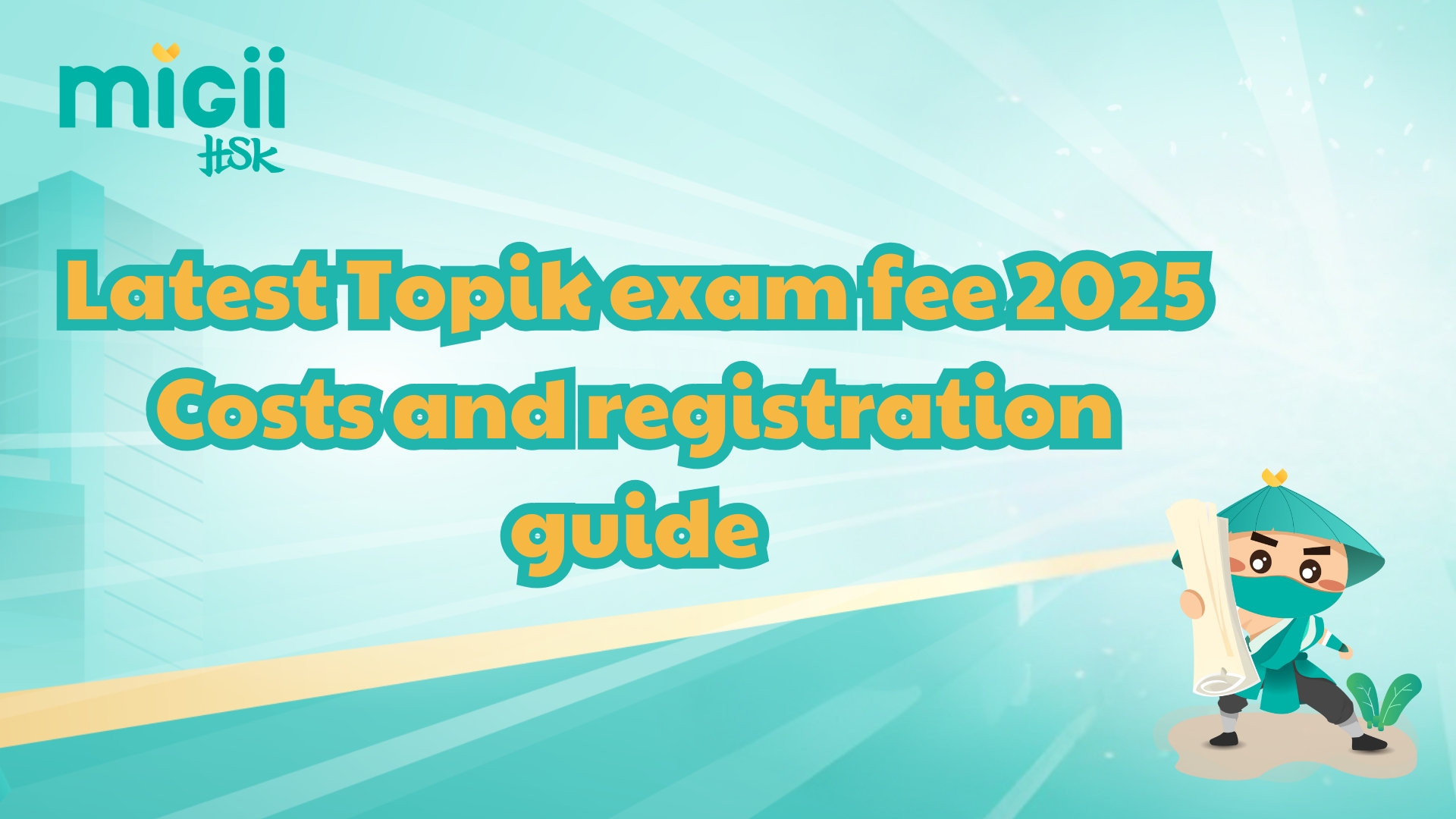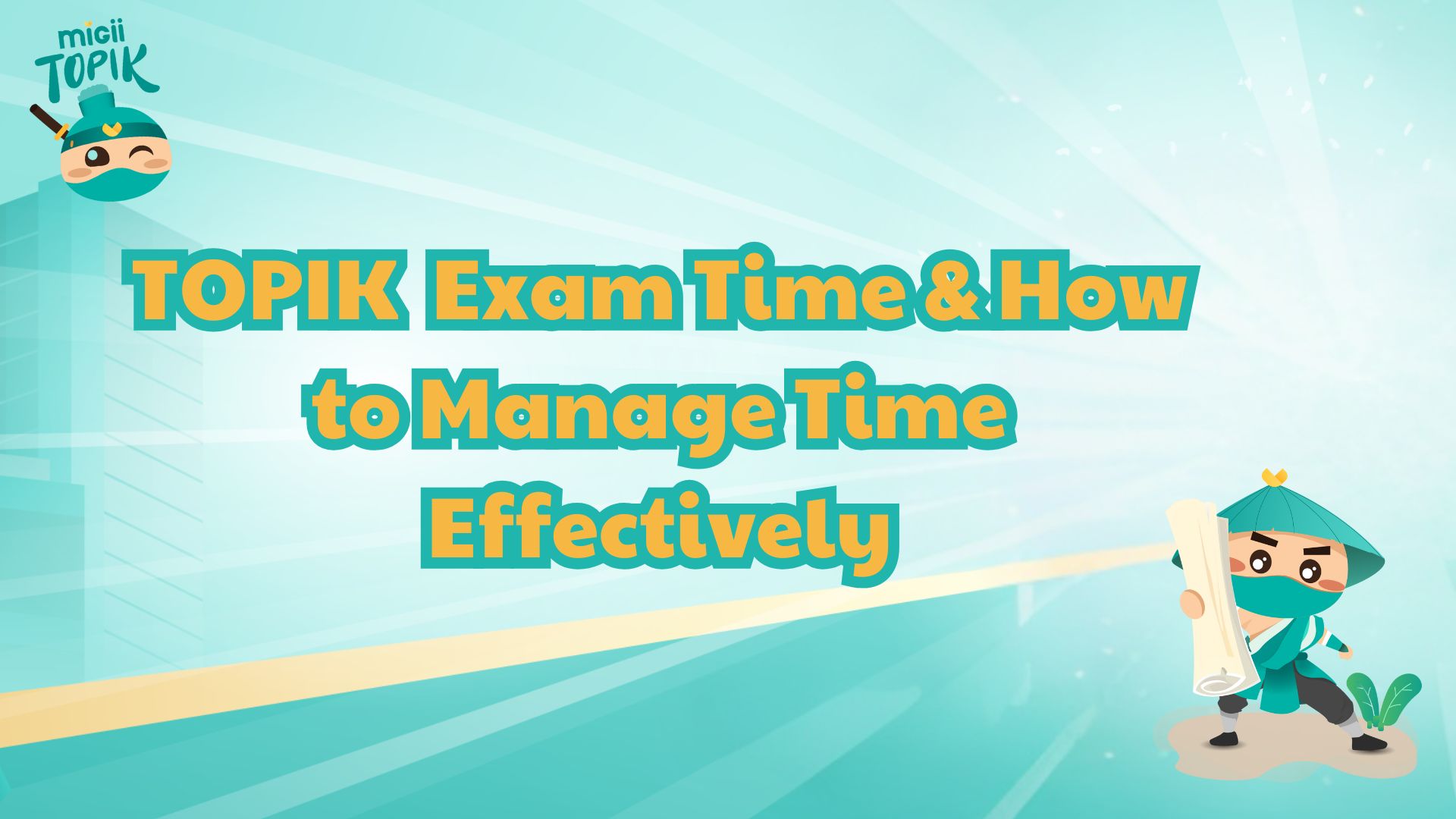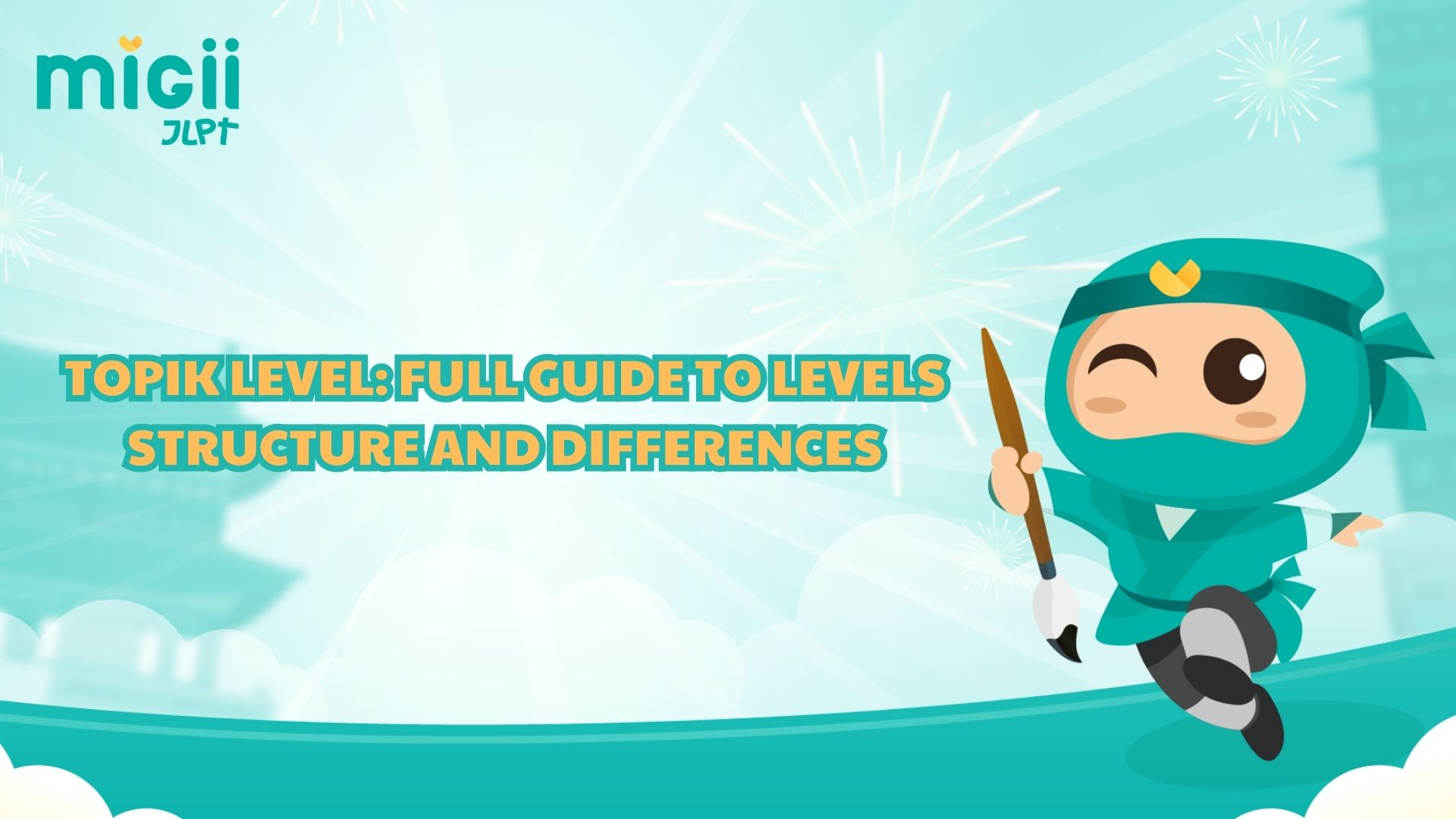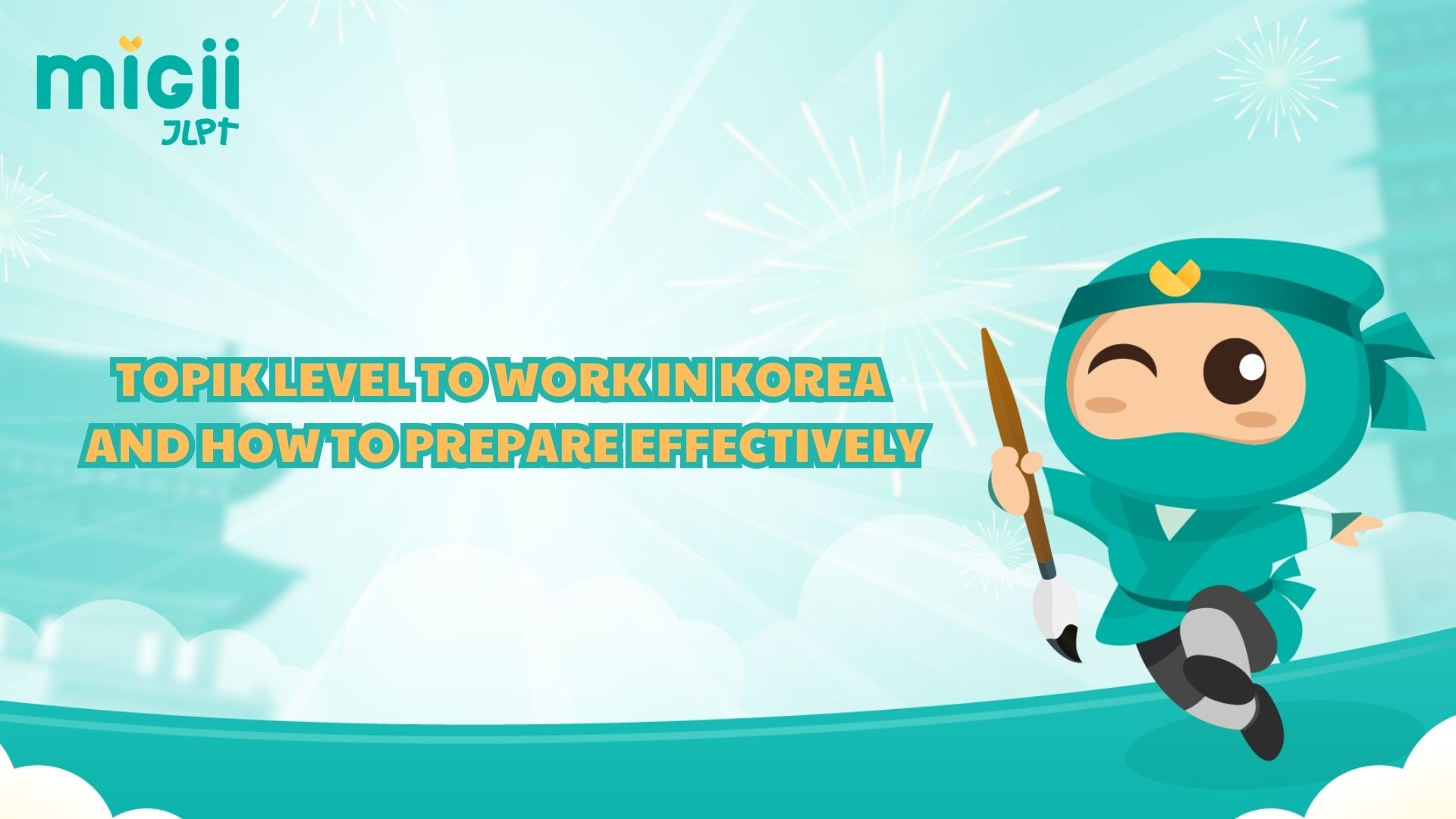If you’re preparing for the JLPT N5, but still unsure how to manage your time or what strategy to use during the test, then this article is made for you. Let’s explore essential JLPT N5 tips and explanations from Migii that will boost your preparation and confidence!
Latest JLPT N5 Exam Structure
To study for the JLPT N5 effectively, it’s important to understand how the test is structured. The JLPT N5 exam is divided into three main sections:
Part 1: Language Knowledge (25 minutes)
言語知識 – Kanji & Vocabulary
|
Question Type |
Number of Questions |
Purpose |
|
Kanji Reading (漢字読み) |
12 |
To test your ability to read and recognize kanji characters |
|
Spelling & Script Conversion (表記) |
8 |
To convert Hiragana into Kanji/Katakana and vice versa |
|
Context-Based Word Choice (文脈規定) |
10 |
To choose the most contextually appropriate word within a sentence |
|
Synonyms and Equivalent Expressions (言い換え類義) |
5 |
To identify words or expressions with similar meanings |
Part 2: Grammar & Reading (50 minutes)
|
Question Type |
Number of Questions |
Purpose |
|
Sentence Grammar (文の文法1) |
16 |
Choose the correct grammar pattern for the sentence |
|
Sentence Construction (文の文法2) |
5 |
Arrange words into a grammatically correct and logical sentence |
|
Sentence Comprehension (文章の文法) |
5 |
Choose the sentence that best fits the context |
Reading Comprehension (読解)
|
Question Type |
Number of Questions |
Purpose |
|
Main Idea – Short Passage |
3 |
Understand the main idea of a short paragraph (approx. 80 kanji) about study or work |
|
Main Idea – Medium Passage |
2 |
Extract key information from a medium-length text (approx. 250 kanji) about daily life |
|
Information Retrieval |
1 |
Locate specific information in a longer passage |
Part 3: Listening Comprehension (30 minutes)
聴解 – Listening Section
|
Question Type |
Number of Questions |
Purpose |
|
Task Understanding (課題理解) |
7 |
Identify the main idea from conversations or short narratives |
|
Key Point Understanding (ポイント理解) |
6 |
Filter and understand key details from the audio |
|
Picture-based Conversation (発表現話) |
5 |
Listen and choose the correct answer based on visual context (images) |
|
Instant Response (即時応答) |
6 |
Provide quick responses to short spoken questions |
Effective JLPT N5 Tips for Last-Minute Preparation
As the JLPT N5 exam approaches, mastering the key material is crucial—but so is learning smart test-taking strategies to save time. While memorizing vocabulary and grammar is essential for answering more questions correctly, the right approach can help you allocate your time wisely and avoid the common trap of "spending too much time early on and rushing at the end."
JLPT N5 Tips – Section 1: Language Knowledge (Vocabulary & Kanji)
Question Type: 漢字読み – Kanji Reading
In this part of the JLPT N5, you're asked to choose the correct reading for a Kanji word that appears in a sentence. This section tests your ability to recognize and pronounce Kanji accurately.
JLPT N5 Tips for This Section
- Focus only on the underlined Kanji instead of reading the entire sentence. This will help you quickly spot the correct answer.
Example: In the sentence “彼は公園で遊んでいる” (He is playing in the park), if “公園” is underlined, you only need to focus on reading “公” and “園”.
- Many Kanji characters have multiple readings depending on the context. So, if you see a Kanji with two or more possible readings, read the whole sentence to determine the correct one.
Example: The Kanji "生" can be read as “sei” in “学生” (gakusei – student) and “nama” in “生魚” (namazakana – raw fish). - Don’t forget chōon (long vowels) and obscure/implicit sounds, as they are common traps that often lead to mistakes.
- Time Recommendation: Spend around 1–1.5 minutes per question, and keep your total time for this section under 18 minutes, so you’ll have enough time for the remaining parts of the test.
Question: 表記 – Converting Hiragana to Kanji/Katakana
This section tests your ability to recognize and convert Japanese writing systems, especially from Hiragana to Kanji or Katakana. It not only checks your reading and writing skills, but also reflects how strong your vocabulary is as you prepare for the JLPT N5.
How to Answer Effectively
- Read the entire sentence to understand the meaning of the word to be converted.
- Determine whether the word should be written in Kanji or Katakana.
Example: In the sentence “いぬはすごくかわいい” (The dog is very cute), the word “いぬ” should be written in Kanji as 犬.
JLPT N5 Tips
Be cautious of homophones—words that sound the same but have different meanings. Context is key when selecting the correct answer.
Also, be careful with similar-looking Katakana characters, like シ (shi) vs ツ (tsu), or ソ (so) vs ン (n), which are commonly confused.
Recommended Time: 15–20 seconds per question; aim to finish this section in no more than 2–3 minutes.
Question: 文脈規定 – Choosing the Right Word Based on Context
In this question type, you’ll be asked to choose the word that best completes a sentence based on its overall meaning and context. It tests your understanding of sentence structure and vocabulary usage.
Strategy to Pass This Section:
- Read the full sentence carefully and focus on the words before and after the blank.
- Keywords are often located immediately before or after the blank space.
Example JLPT N5 Question:
“彼は____を食べました” (He ate ____).
If the previous sentence mentions “昼ごはん” (lunch), then a good choice could be “寿司” (sushi).
If you’re unsure, use the elimination method to rule out obviously incorrect answers.
Example: If the choices are “食べる” (to eat), “飲む” (to drink), and “見る” (to see), you can eliminate “見る” based on the context involving food.
Make sure the type of word you choose (verb, noun, adjective) fits the sentence’s grammar structure.
Recommended Time: Around 1 minute per question; keep total time for this section under 10 minutes.
Question: 言い換え類義 – Choosing the Best Synonym in JLPT N5
This part of the test checks how well you can recognize synonyms or similar expressions in a sentence. You’ll be given an underlined word and asked to select the one with the closest meaning based on context.
Example JLPT N5 Question:
If the underlined word is “早い” (hayai – early/fast), you might be given options like:
- 速い (hayai – fast, in terms of speed)
- 遅い (osoi – slow)
You’ll need to spot subtle differences in meaning and choose the word that fits best in the sentence.
JLPT N5 Tips for the Synonym Section
- Compare the meanings of each answer choice carefully.
- Practice identifying synonyms in different contexts, since one word can have multiple meanings depending on the situation.
- Focus on the context of the sentence, because only one option will truly fit the intended meaning.
- If you recognize more than one choice, use the elimination method to remove words that don’t make sense in the context.
- Bonus tip: While studying for the JLPT N5, create a list of synonym pairs and learn how their meanings differ depending on context. This will give you an edge when facing similar questions on the real test.
Recommended Time: Spend about 30–40 seconds per question, and aim to finish this section in 2.5–3 minutes total.
JLPT N5 Tips – Section 2: Grammar & Reading
文の文法1 (16 Questions) – Choosing the Right Grammar Pattern in a Sentence
In this section of the JLPT N5, you’ll need to select the most appropriate grammar form for a single sentence. The questions will often focus on particles, verb forms, or basic JLPT N5 grammar structures used in daily conversation.
JLPT N5 Tips for Grammar Questions
- Read the sentence before and after (if available) to understand the full context. This helps you choose the correct grammar or particle.
- Example: If the previous sentence talks about going to school, the correct particle is likely “に”:
→ “学校に行きます” (I go to school).
Focus on Key Particles
Particles like を (wo), に (ni), が (ga), and で (de) show up frequently in JLPT N5 questions—and they're easy to confuse.
Example:
✔️ “リンゴを食べます” (I eat an apple) → correct
✖️ “リンゴが食べます” → incorrect particle usage
To avoid these mistakes, make sure your JLPT N5 study plan includes focused practice on particle usage and basic sentence structure.
Must-Know Grammar Patterns
- Verb forms: ます, ない, て
- Expressing intention: ~つもりです
→ Example: “行くつもりです” (I intend to go)
Time Strategy: With 16 questions in this section, you should aim to spend about 1.5 minutes per question, totaling around 24 minutes to stay on track.
文の文法2 (5 Questions) – Choosing the Grammatically Correct Sentence
In this part of the JLPT N5, you're asked to choose the sentence that is grammatically correct and complete from a list of options. The test often includes sentences with common grammar errors such as incorrect particles, improper word order, or flawed sentence structure.
JLPT N5 Tips for This Section
Immediately eliminate any sentence that contains obvious grammar mistakes to save time.
Example:
✔️ “私はバナナを食べます” (I eat a banana) → correct
✖️ “私はバナナが食べます” → incorrect, because the particle “が” is used wrongly here.
- Remember that standard Japanese sentence structure typically follows:
Subject – Object – Verb (SOV).
Make sure the nouns, verbs, and particles are all in the correct order. - Also, pay attention to verb conjugation:
- “行く” (iku – to go) → 行きます (ikimasu – polite form)
- Negative form → 行きません (ikimasen)
Recommended Time: 1 minute per question; total about 5 minutes.
文章の文法 (5 Questions) – Understanding Sentence Flow in a Paragraph
This section tests your ability to understand how sentences are logically connected within a short paragraph. You’ll be asked to choose the most appropriate sentence to complete or continue the paragraph smoothly.
Example:
First sentence: “今日は雨が降っています。” (It’s raining today.)
A suitable next sentence might be:
“だから、傘を持って行ったほうがいいです。” (That’s why you should bring an umbrella.)
This section challenges your ability to read fluently and follow the logic of Japanese writing, which is a valuable skill both for the test and real-world use.
JLPT N5 Tips for Sentence Connection (文章の文法)
To do well in this section, you need to understand how ideas connect within a paragraph.
Key Pointers:
- Pay close attention to transition words, such as:
- しかし (shikashi – however)
- だから (dakara – therefore)
- または (mata wa – or)
These words are crucial for following the paragraph's logic.
- If an option contradicts the main idea, it’s likely incorrect.
Example:
If the paragraph talks about enjoying sports, then a sentence like
“私はサッカーが嫌いです” (I don’t like soccer)
would likely be out of place.
Recommended Time: Around 5 minutes for all questions in this section.
Short Passage Reading Comprehension (内容理解 – 短文)
3 Questions
You’ll be given short reading passages (about 100–150 characters) and asked questions about the main idea.
JLPT N5 Reading Tips:
- Don’t waste time reading every word in detail—skim the passage to get the main idea.
- Focus on keywords, especially those that appear at the beginning of sentences.
Example:
If the first sentence is:
“日本の春はとても美しいです。” (Spring in Japan is very beautiful.)
Then pay attention to words related to spring, like:
“春” (haru – spring), or “花見” (hanami – cherry blossom viewing).
Even if you don’t understand the entire passage, focusing on keywords and context will help you make a fairly accurate guess.
Recommended Time: About 1.5–2 minutes per question, or 6 minutes total.
情報検索 – Information Retrieval (1 Question)
This JLPT N5 question tests your ability to quickly locate specific information in a longer passage. To succeed, you’ll need to apply skimming and scanning techniques—reading efficiently without having to deeply understand the entire text.
JLPT N5 Tips for Information Retrieval Questions
- Read the question first
This helps you know exactly what to look for in the text.
Example: If the question asks, “Who is the author?”, you can immediately focus on sections mentioning names or phrases like “作者は…” (The author is…). - Use scanning techniques to search for:
- Names
- Locations
- Dates or years
- Numbers or data
- Specific events
JLPT N5 Example: If the question is “What year was the book published?”, you just need to scan for a year or date reference.
- Highlight or mentally note key information during your first read-through, so it’s easier to match the question with the right part of the text.
Recommended Time: About 2 minutes should be enough to complete this task.
No need to read the entire passage in detail—just search for the specific piece of information the question is asking.
JLPT N5 Listening – 課題理解: Understanding the Main Topic (7 Questions)
In this section of the JLPT N5, you'll listen to short dialogues and answer questions about the main topic of the conversation. The topics usually cover everyday situations such as shopping, meeting up with someone, or light casual talk.
JLPT N5 Tips for This Listening Section
- Focus on the big picture, not the small details.
Don’t try to memorize every single word—instead, listen to the full exchange and capture the overall meaning. - Read the question first: This helps you know what to listen for before the audio starts.
- Pay attention to frequently mentioned keywords, especially those related to:
- Time (きょう – today, あした – tomorrow, いま – now, ごご〜じ – PM ~ o’clock)
- Places (レストラン – restaurant, えき – station, いえ – house, がっこう – school)
Activities (買い物 – shopping, デート – date, 勉強 – study, しごと – work)
JLPT N5 Sample Breakdown
If the dialogue is about planning a dinner meeting, listen carefully for phrases like:
- “好きな食べ物” (favorite food)
- “レストラン” (restaurant)
- “いつ” (when)
- “どこ” (where)
These keywords usually point to the main point of the conversation.
Time Recommendation: With 7 questions total, try to spend about 1 minute per question, so you can finish the section within the time limit.
ポイント理解 – Identifying Key Information (6 Questions)
This part of the JLPT N5 Listening section tests your ability to filter and understand specific details in a conversation. The questions usually focus on information such as time, price, or location.
JLPT N5 Tips for This Section
- Listen carefully when a speaker emphasizes key information—for example, their tone might slow down when saying something like “3,000 yen” (3000円).
- Read the question in advance, and identify keywords such as:
- いつ (itsu – when)
- どこ (doko – where)
- いくら (ikura – how much)
JLPT N5 Example:
If the question is “Where will the event take place?”, listen for phrases like:
- “会議センター” (kaigi sentaa – conference center)
- “レストラン” (resutoran – restaurant)
Time Recommendation: 1 minute per question, totaling around 6 minutes.
発表現話 – Matching Dialogue with Pictures (5 Questions)
This section combines listening comprehension and visual observation. You’ll listen to a short conversation while looking at an image, then select the option that best matches the situation described.
JLPT N5 Listening Tips for Picture-Based Questions:
- Look at the picture first. Pay attention to:
- The number of people
- Their facial expressions
- Object placements
- The action taking place
- While listening, match what is said to what you see.
- Focus on verbs that describe actions.
Example:
“彼女は本を読んでいます” (She is reading a book) → Look for someone who is actually reading in the image.
Another example: If the image shows a busy café and the audio mentions “two people order coffee,” choose the picture that shows exactly that.
Time Recommendation: 1 minute per question; aim to finish this section in about 5 minutes.
即時応答 – Quick Response to Short Questions (6 Questions)
In this JLPT N5 section, you'll hear short spoken questions and must quickly select the most appropriate response. This simulates real-life daily conversations—a practical skill for anyone studying Japanese at the N5 level.
JLPT N5 Tips for the Quick Response Section:
- Focus only on the question itself.
You don't need to understand the full situation—just identify the speaker’s main intent.
Example:
If you hear:
“晩ごはん食べに行きませんか?” (Would you like to go out for dinner?)
And the response is:
“はい、ぜひ!” (Yes, definitely!)
→ That would be the correct answer.
- If you miss part of the question, don’t panic.
Skip it and move on—you can always return to it if time allows.
Recommended Time: Around 30 seconds per question, or approximately 3 minutes total.
General JLPT N5 Exam Tips
Understand the Test Structure Early
One of the most important jlpt n5 tips is to thoroughly understand the test structure early in your study process.
The JLPT N5 exam is divided into three main parts:
- 言語知識 – Language Knowledge (Vocabulary & Grammar)
- 読解 – Reading Comprehension
- 聴解 – Listening Comprehension
Each section has different question styles and approaches. By understanding the format of each, you can plan a more effective study and test-taking strategy.
This makes you more confident on test day and helps you manage your time wisely across all sections.
Effective Time Management for the JLPT N5
In the JLPT N5, time is one of the most critical factors that can determine your success.
Here are some smart jlpt n5 tips for better time management:
- Start with the easiest questions in the Language Knowledge section (25 minutes). This helps you save time and build confidence early.
- In the Reading section (50 minutes), use skimming techniques to quickly grasp the main idea—don't get stuck on every little detail.
- For the Listening section (30 minutes), remember that the audio is played only once, so give it your full attention.
By managing your time wisely, you won’t just finish the test on time—you’ll also reduce stress and increase your chances of passing.
Practice Tests & JLPT N5 Simulations Are Essential
Regular practice is the key to boosting both your test-taking performance and confidence.
The benefits of practicing JLPT N5 questions include:
- Familiarizing yourself with the actual question format
- Improving your reading speed and accuracy
- Identifying your weaknesses so you can focus your study efforts effectively
JLPT N5 Tip: Always Review Your Mistakes
After completing a practice test, take time to review your answers in detail. Understand why you got something wrong, and learn how to avoid repeating the same mistake.
You can prepare using:
- JLPT N5-specific workbooks
- Online study websites
- Mobile apps that let you study for the JLPT N5 anytime, anywhere
All these tools help you build a consistent and flexible learning routine—making your jlpt n5 experience more effective and enjoyable.
Maximize Your JLPT N5 Preparation with Migii
With the Migii app and the migii.net platform, you can access a full bank of JLPT N5 practice questions and train by specific skill areas: vocabulary, grammar, reading, and listening. This structured approach helps you steadily improve across all sections of the exam.
One of Migii’s biggest advantages is its timed test simulation feature, which helps you get used to real JLPT N5 time pressure. Automatic reminders also keep your study rhythm on track—perfect for learners balancing JLPT N5 studies with work or school.
Smarter Learning with AI Writing Feedback
Migii also includes a unique feature that few platforms offer: AI-based writing correction. Unlike regular quizzes that only give right or wrong answers, this feature provides detailed feedback and suggestions for improvement.
This allows you to build flexible and faster writing skills—an important but often overlooked part of the JLPT N5 exam requirements.
Want to know how to pass JLPT N5 in a smarter way?
Just visit migii.net and start practicing today—you’ll feel the difference for yourself!
Conclusion
While JLPT N5 is the beginner level of the Japanese Language Proficiency Test, it still requires serious preparation and smart strategies. By applying the JLPT N5 tips and practical experience we’ve shared above, you’ll be able to study more efficiently and maximize your exam results. Use the right strategy, master the techniques, and rely on a platform like Migii to make your JLPT N5 learning journey both effective and enjoyable. Good luck—and stay motivated to conquer the JLPT N5!
